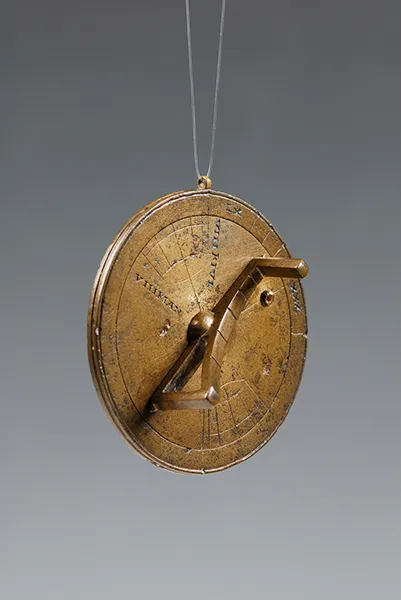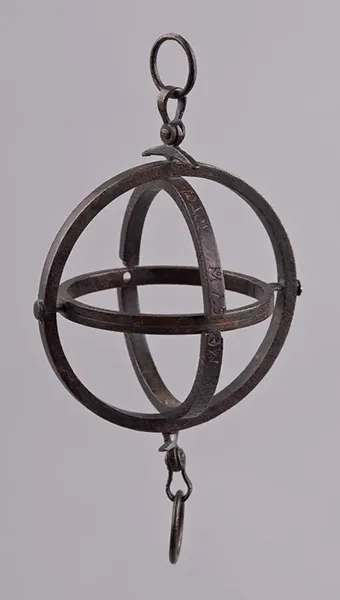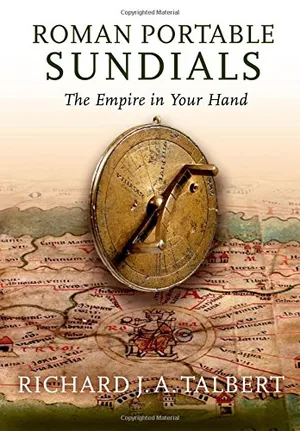Early Tech Adopters in Ancient Rome Had Portable Sundials
A little gadget could make you look smart, rich, and tech-savvy—all without necessarily fulfilling its real function
/https://tf-cmsv2-smithsonianmag-media.s3.amazonaws.com/filer/65/16/6516be76-e641-402a-afd9-f924cf7e9a29/mos-sundial.jpg)
It’s the four or fifth century and you’re a wealthy, cosmopolitan Roman sightseeing across the empire, or perhaps an armchair traveler entertaining other well-educated friends for dinner. What could you pull out to impress your companions? One good option would be a geographical portable sundial, the closest Romans got to an iPhone.
These sundials were designed to tell time on the go—but it turns out they really excelled at being a snazzy gadget. Many were made of shiny bronze, they sat comfortably in a hand, and it took real technical knowledge to use them properly. There are about a dozen examples known today, each with a cheat sheet of coordinates for using the device in specific places.
It’s a powerful tool more than a millennium before GPS, atomic clocks, or even a practical way to determine longitude. “If the sun is shining, you are carrying with you one portable gadget or instrument that is your own, a very personal thing, and you can supposedly rely on it to tell you what the time is,” says Richard Talbert, a historian at the University of North Carolina who has written a new book about the devices, called Roman Portable Sundials.
Ancient Romans didn’t measure time in our 60-minute hours; instead, they divided daylight and darkness into 12 increments each, a system they adopted from the Egyptians. In Rome, that meant an hour was about 45 minutes in winter and 75 in summer. Hours would have governed meetings, courts and dinners, but not in the carefully structured way so many of us experience today.
“They don’t make appointments and get impatient when you’re 15 minutes late,” says Alexander Jones, curator of an exhibition called “Time and Cosmos in Greco-Roman Antiquity” at the Institute for the Study of the Ancient World in New York that explores the ancient relationship with time. Most sundials weren’t detailed beyond hours anyway, notes Denis Savoie, an astronomer who specializes in sundials.

But time was key to the Romans’ obsession with astrology, which made certain days or hours promising or foreboding for certain activities. Hundreds of funerary inscriptions marked the deceased’s time of or age at death to the hour. Time mattered, even if it wasn’t for trains or timesheets.
That helps explain the popularity of sundials—more than 500 have been discovered, 36 in Pompeii alone, Talbert says. Most of these were stone and installed where they were meant to be used, since sundials need to be calibrated by latitude.
Portable, pocketwatch-like models offered more freedom, allowing owners to travel and still have some semblance of the time, but came with more constraints—and not just the price tag. They worked in half-day increments, so you had to know if the sun was rising or setting, which could be difficult to determine around midday. They were inscribed with latitudes for popular destinations and exotic locales, but there was no guarantee the list actually matched contemporary measurements. (On the other hand, you could manually set the dial to whatever latitude you chose.) They became less accurate in summer and winter and when carried farther north. And of course you had to know how to use the fiddly adjustable bits. “That's a lot of ifs in the real world,” Jones says. One perk: they didn’t require knowing which direction was north.
There were multiple models. In one type, the user turned a smaller disk within a larger disk to account for the latitude, turned a pointer on the smaller disk to account for the month, then dangled the device facing the sun to cast a shadow across hour markers on the pointer. For another design of three nested rings, the user tilted the innermost horizontal ring based on latitude, then spun the assembly so a beam of sunlight could pass through a pinhole to reach hour markers. (This model was also collapsible for additional portability.) Four examples are on display in the “Time and Cosmos” exhibition through April 23.

The adjustable sundials are complicated objects to study because many are archaeological orphans, found randomly or rediscovered in storage. They are universally hard to date—they use centuries of mathematical and astronomical work, but cannot be carbon-dated or dated based on objects found near them. They must be younger than the concise method of writing latitude used in the location keys, which was developed during the second century. About half the lists include Constantinople, so these must have been inscribed after 330.
For Talbert, these latitude listings are the most intriguing parts of the devices. They clearly signal the freedom offered by Roman peace and infrastructure. The lack of a fixed set of places or listing order is also a reminder that Romans didn’t grow up with schoolroom maps and satellite images to build a picture of the world around them.
But for owners of these devices, they at least knew that if they made it as far as Ethiopia, Spain or Palestine, they would know what time it was—or close enough, at least. “You can show people, ‘Oh look, I’ve got this clock, it even works in Britain,’” Jones says. “They’re the way that people could carry time around with them, so to speak.”
Whether you prefer an heirloom luxury watch that doesn’t miss a beat or the flaws of Google Glass, the sentiment is still the same. “Just like today, people get a taste for this kind of thing and they want to have their own and they want to have it just as they like it,” Talbert says. “It’s very human really.”
